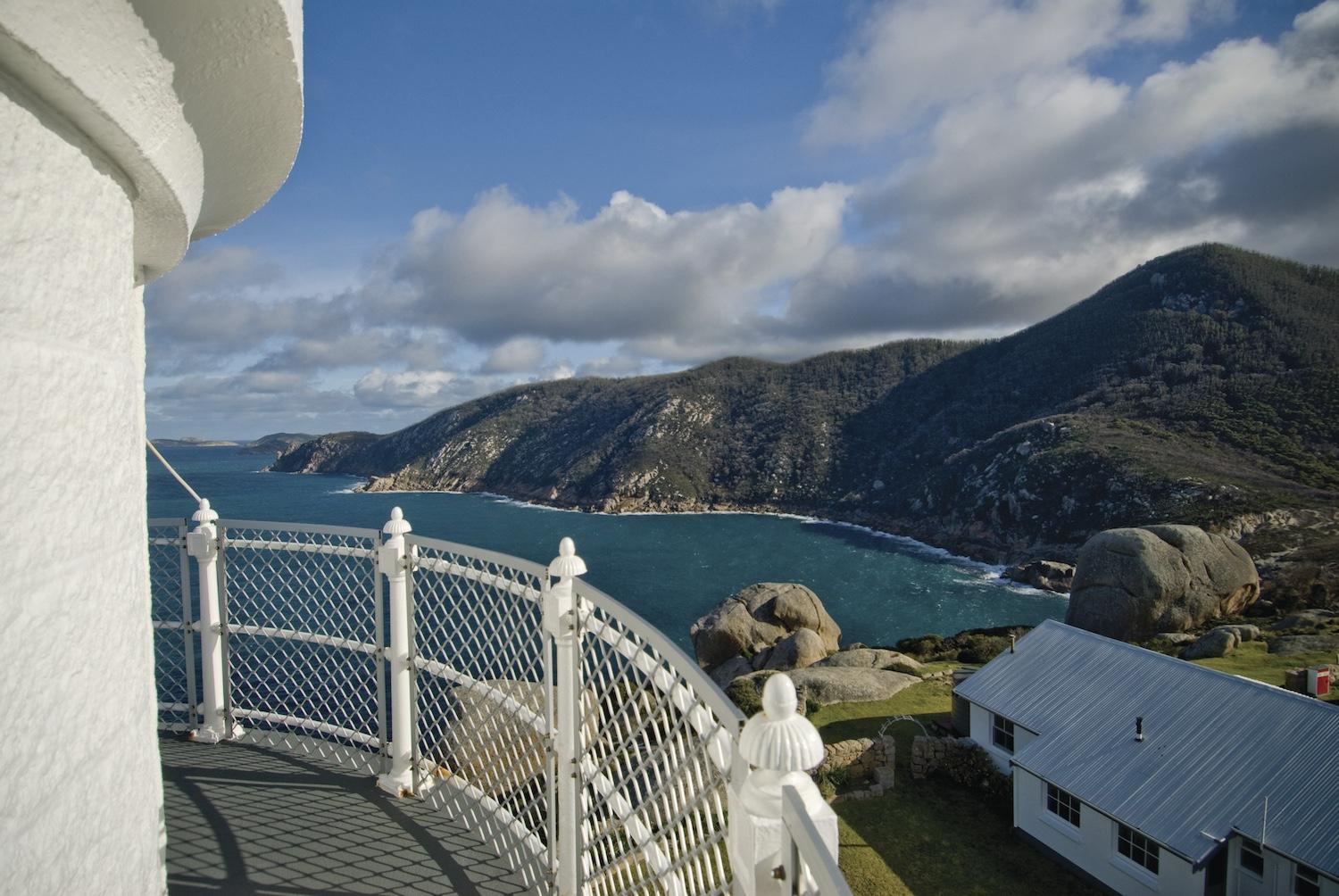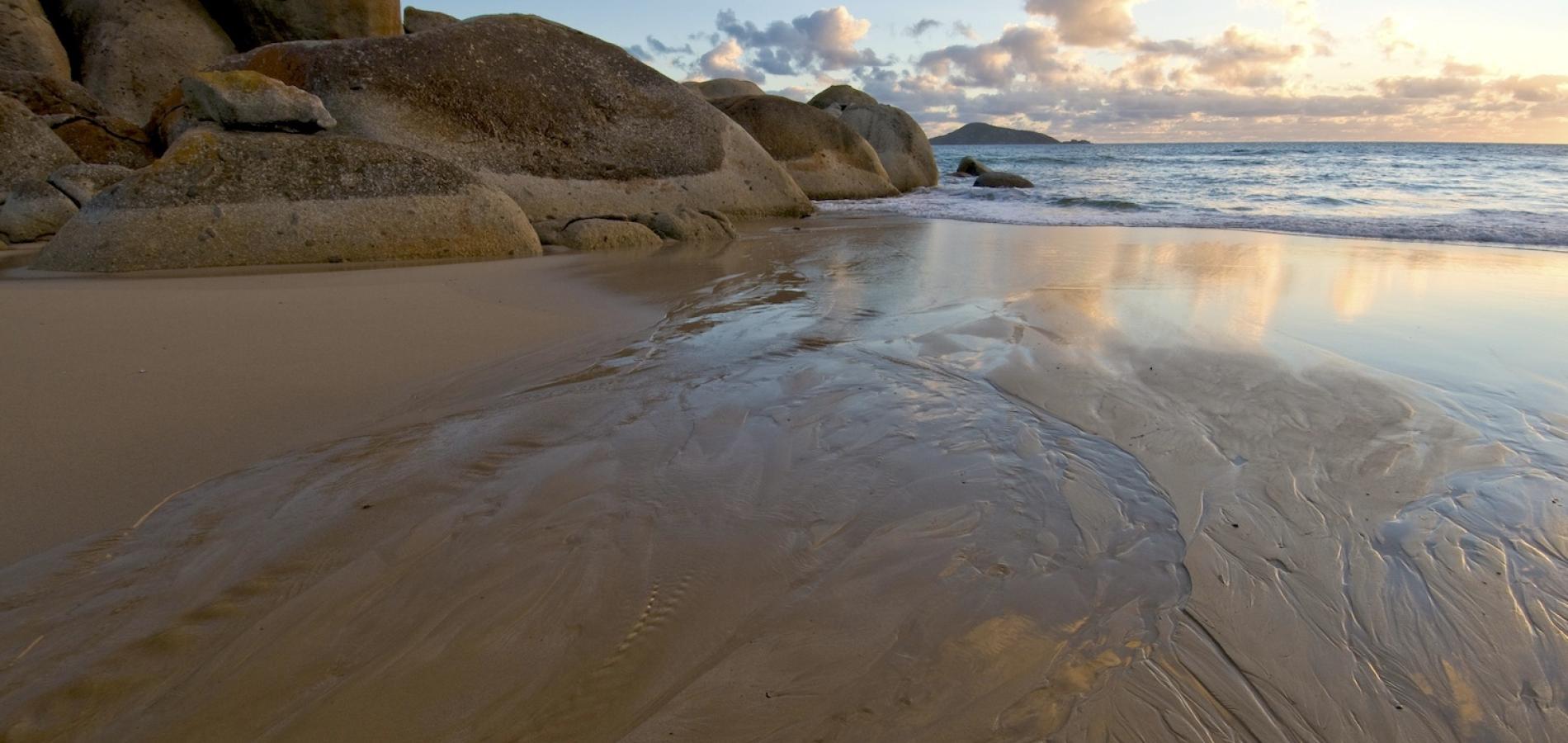Editor's note: Across the globe, there are thousands of national parks and protected areas. To look at how other countries manage and protect their parks, and to introduce you to some incredible destinations, the National Parks Traveler occasionally will post a feature from abroad.
The name Wilsons Promontory National Park (WPNP) is a mouthful. To most Australians, (who’ll happily give anyone and everything a nickname) it’s simply ‘The Prom.’ Its formal name dates to the early 1800s, when it was named after Thomas Wilson Esq, a British patron of the natural sciences, by John Hunter, then Governor of New South Wales. For the Gunaikurnai and Boonwurung people, whose cultural connection to the area goes back 6,500 years, it’s Yiruk Wamoon.
The Prom’s more than 50,000 hectares (123,500 acres) encompass mountains, forests, fern gullies, granite headlands, coastal landscapes, and sandy beaches. It’s a haven for wildlife from kangaroos and wallabies to wombats, echidnas, emus, small marsupials, and many bird species. In the marine national park, Victoria’s largest, you can spot penguins, seals, and sea lions year-round and southern right, killer, and humpback whales seasonally.

The park is popular with hikers, who can reserve overnight space in huts/Parks Victoria
Much of the rocky coastline, dominated by massive granite boulders and steep cliffs, and the nearby islands are only accessible by boat. If you take a boat tour, you’ll see the rocky peninsula reaching out like a ghostly finger towards Tasmania, a reminder that, until 12,000 years ago, the southernmost point of the Australian mainland formed a land bridge to the now island state.
Around four hours’ drive from Melbourne, Victoria’s capital, via the South Gippsland Highway, The Prom includes a small village at Tidal River from where visitors can head off on multi-day hikes along the coast and into its gullies and forests, climb the 558 metre-high (1,830 feet) Mount Oberon for 360-degree views over the peninsula, or set up camp/rent a cabin for a longer stay. In summer, families book months in advance to enjoy the unspoiled beaches, and off-grid, natural environment. It’s popular year-round with campers, bushwalkers, and nature lovers. Limited, and carefully monitored, tour operators provide a range of experiences, from guided hikes to boat tours and scenic flights.
The oldest national park in Victoria, The Prom was temporarily reserved as a park in 1898, then permanently reserved in 1908. Since the first nature lovers started campaigning to protect the area in the 1880s, Victorians have instinctively understood that this isolated peninsula is unique. Any changes or developments are scrutinised carefully. Attempts to develop the park (such as the idea for a golf course proposed in 1960) are quickly rejected.
As part of its conservation action plan, Parks Victoria, the statutory authority that manages Victoria’s parks and reserves, announced in 2020 that The Prom would “become a 50,000-hectare (123,500 acres) climate change safe haven,” a plan that will make WPNP Victoria’s largest conservation sanctuary. Including an exclusion fence to prevent introduced animals from entering the park, the program also prioritizes habitat restoration, invasive species control, and recovery programs for at-risk species at The Prom and beyond.
Dr. Mark Norman is Parks Victoria’s chief conservation scientist and is responsible for all its nature conservation and research programs. He is leading the sanctuary project, which will not only preserve, protect, and rehabilitate damaged habitats at The Prom, but also work with other parks around Australia to protect species as climate change impacts their habitats.

Wallabies are some of the park's residents/Parks Victoria
“We're going to draw a line in the sand here. We're going to stop the cats and the foxes and the deer,” said Norman, whose passion about the project and its ambitions is palpable. “We're going to manage the weeds and we're going to help restore the habitats that have suffered, and we're going to try and help species in trouble elsewhere.”
The south coast of Victoria is buffered by the cool waters of Bass Strait and the Southern Ocean, offering protection against rising temperatures. Along with the measuresto restore habitat and eliminate pests as part of the sanctuary project, it’s an ideal place to mitigate the impact of climate change on Australia’s unique flora and fauna.
“We're really pushing it as a refuge, where we can resist the impacts of climate change elsewhere. We're adopting the Resist-Accept-Direct framework developed by the US National Park Service. We want it to be our primary conservation flagship,” says Norman.
Key to implementing the sanctuary plan has been rehabilitating degraded habitats and conducting in-depth surveys of the park to better understand its current state. Camera traps used to look for cats, foxes, and deer have revealed more than just predators; they’ve been catalysts for important finds and significant insights into the park's ecology. The discoveries have validated the project team’s work and galvanised them to do more.
“They've rediscovered green parrots…They've found lace monitors again; they've discovered plants that are almost extinct elsewhere in their thousands. They've just done offshore island surveys - isolated for 18,000 years - and they found bright yellow skinks and rare flowers and plants. There's a real buzz and energy that the sanctuary is coming,” explains Norman.
For visitors to the park, the conservation and protection plans are being designed to enhance their experience, offering better, more sustainable ways to engage with the park and understand its significance. These plans include upgraded trails, a new visitor centre, and a new Wildlife Walk, which will offer all-abilities access.

A birdseye view of the park can be had from its lighthouse/Parks Victoria
For regular visitors to The Prom, maintaining low-impact tourism is essential. Sighting kangaroos at dusk, enjoying the daily spontaneous promenade of wombats and echidnas, and hearing the raucous dawn chorus are experiences that can never be allowed to change. For campers hiking to walk-in sites, staying off-grid is essential.
Like all national parks, The Prom needs to balance protection with the public's right to access. This is a delicate task in a place that has significant meaning to the traditional owners and where many people are deeply invested in its conservation or have a deep emotional connection to the site.
“I came from a science background where I did not understand enough the social and political licence that you need to build the resources to do this properly,” says Norman. If people don't have constructive contact with nature, there's no way in the world they're going to champion or pressure or vote or donate money or volunteer to help save those things. It's a critical interaction.
“But you don't [want to] kill your golden goose. You can only create quality nature experiences by having healthy systems. Those systems bring people in, who in turn become your advocates for continuing to support those natural systems.”

The park's Paradise Valley brings immense perspective to visitors/Parks Victoria



 Support Essential Coverage of Essential Places
Support Essential Coverage of Essential Places






